In our article on microdosing cannabis for glaucoma, we looked into how certain cannabinoids can help relieve eye pressure and reduce the symptoms of this serious eye condition. Now, we break down the best cannabis edibles you can treat your eyes and taste buds with.

Delta 9 edibles are the healthiest way to ingest small amounts of cannabis. They’re delicious, easy to consume, and contain low doses of THC, CBD, and other compounds that work synergistically to deliver a balanced cannabis experience.
Shop our collection of the best THC edibles to elevate your well-being.
For example, our delicious Relax Plus gummies are excellent for relieving pain and stress.
What is Glaucoma?
Glaucoma is a chronic condition caused by damage to the optic nerve that connects your eye to the brain. The optic nerve damage is usually caused by extremely high intraocular pressure (IOP), or eye pressure. If left untreated, glaucoma can cause blindness in people over the age of 60.
Types of Glaucoma
The most common type of glaucoma is primary open-angle glaucoma. Primary open-angle glaucoma occurs gradually when the eye does not drain fluid as well as it should. With this type of glaucoma, the trabecular meshwork—a tiny, sponge-like tissue located near the base of the cornea—becomes clogged and can’t drain the fluid, leading to fluid buildup and an increase in the intraocular pressure.
Angle-closure glaucoma, also known as acute glaucoma, occurs when the drainage canals suddenly become blocked. This sudden blockage causes a rapid intraocular pressure increase, leading to immediate symptoms like severe headaches, eye pain, blurred vision, and nausea. Angle-closure glaucoma is less common but more dangerous and requires immediate medical intervention (eye surgery) to avoid permanent vision loss.
Symptoms of Glaucoma
With some types of glaucoma, there are no early warning signs. Vision impairment might happen gradually, which makes it difficult to detect symptoms. As many patients with open-angle glaucoma develop no symptoms, routine eye exams are critical for detecting the disease in its early stages.
Here are the typical symptoms of glaucoma:
- Eye pain
- Red eyes
- Increased eye pressure
- Headaches
- Rainbow-colored halos around lights
- Impaired vision, blurred vision, tunnel vision, or blind spots
- Nausea and vomiting
How Is Glaucoma Treated?
Glaucoma treatment may slow down vision loss, but currently, there is no treatment that can restore vision.
- Glaucoma medications may help decrease fluid buildup and increase drainage to improve eye pressure. These involve prescription eye drops and oral medications. Because this is a lifelong condition, glaucoma patients may need to use eye drops daily for life.
- Laser surgery involves using a strong beam of light to help improve fluid drainage. But the results from laser treatments can last between one and five years.
- Eye surgery is another way to help reduce intraocular pressure. It’s more invasive than other methods, but can also achieve better results than eye drops or laser surgery.
Interestingly, low doses of cannabis, specifically Delta 9 and cannabidiol (CBD), seem to be effective at reducing eye pressure. While there are cannabis strains for glaucoma that may also help relieve the symptoms of glaucoma, they are not considered a primary treatment but rather a healthy complementary approach.
Read more about microdosing cannabis and the advantages of low-THC.
How Does Cannabis Help Patients With Glaucoma?
Delta 9 THC, also known as THC, is the main psychoactive chemical extracted from the cannabis plant. Higher amounts of THC may have mind-altering, psychoactive properties, but low amounts of THC are generally considered safe for most people. The intricate relationship of THC with our body’s endocannabinoid system (ECS) produces all of its therapeutic benefits.
THC in the Endocannabinoid System
The endocannabinoid system (ECS) is a complex network of signals and receptors. Its main role is to maintain our body’s internal balance and stability by regulating a wide range of physiological functions, such as sleep, mood, pain perception, and stress response.
According to Lerner, et. al., the ECS “serves pivotal roles in a diverse range of physiological and pathophysiological states, including behavior, pain, schizophrenia, obesity, Alzheimer disease, multiple sclerosis and cardiovascular disease.” While our bodies produce endocannabinoids that interact with cannabinoid receptors, the hemp plant produces phytocannabinoids, such as THC and CBD. They also bind to and interact with cannabinoid receptors, including the main types, CB1 and CB2.
Sufficient amounts of Delta 9 in our system bind to the CB1 receptors and produce those euphoric feelings we typically call the “high.” Studies show that the therapeutic effects of THC increase when taken together with CBD: “CBD modulates the psychoactivity of THC and reduces its adverse event profile.” This synergy between CBD, THC, and other cannabis compounds works together to produce greater therapeutic effects. This is the so-called entourage effect.
Entourage Effect and Full Spectrum Gummies for Glaucoma
In the entourage effect, CBD improves the safety and tolerability of THC and its effects on the cannabinoid receptors. It is even capable of downregulating its possible adverse effects (e.g., increased heart rate, paranoia, and sedation). We combined THC and CBD in full spectrum CBD to enhance the benefits and reduce the possible overwhelming sensations of THC.
Full spectrum CBD gummies contain both major cannabinoids and other minor cannabis compounds to take your cannabis experience to a whole new level. We are firm believers in the all-around amazing health benefits low doses of Delta 9 THC and CBD have to offer. Did you know microdosing cannabis can alleviate migraines for some sufferers?
Okay, maybe you knew that one, but what about the beneficial effects of THC and CBD on our dopaminergic system? Low doses of cannabis can increase dopamine levels in the brain, leading to improved mood and less anxiety. Our full spectrum Relax Plus gummies are always a good choice when you need a shot of dopamine and a feel-good vibe.
The combined benefits of THC and CBD might also help people suffering from increased intraocular pressure. Cannabis seems to treat glaucoma symptoms primarily by reducing the pressure in the eye. Here's how Delta 9 THC, cannabidiol (CBD), and Delta 8 THC can help people with glaucoma.
THC Can Lower Eye Pressure
Intraocular pressure is a key factor in the progression of glaucoma. Tetrahydrocannabinol (THC) has been shown to decrease intraocular pressure and reduce damage to the optic nerve.
…inhaled cannabis significantly lowers IOP from baseline, and that this effect is detected within 40 minutes of inhalation. This IOP lowering of about 15% slowly drifted back towards baseline, but the effects were still significant at 4 hours post-treatment dosing. (Mosaed, et. al.)
Cannabis Improves Blood Flow
There is evidence that shows that THC increases blood flow to the optic nerve. This is important, as improved circulation can help prevent further damage and loss of vision.
In their book, Lopez and Nataneli reveal that low doses of dronabinol, a synthetic THC-derived cannabinoid, significantly improved the condition of the optic nerve. Also, the subjects in the experiment experienced no psychoactive effects normally associated with THC, suggesting that regulated, low-dose administration might offer significant benefits without the associated "high."
THC and CBD Alleviate Pain and Other Symptoms of Glaucoma
Chronic pain, nausea, and vomiting are the most common symptoms of glaucoma. Cannabis is known for its analgesic effects. By interacting with our body’s endocannabinoid system, THC and CBD help modulate pain sensation and provide pain relief.
THC and CBD also have potent anti-inflammatory properties. Inflammation can contribute to glaucoma and other chronic conditions, but our tasty Energy gummies with low-dose THC and CBD are perfect for fighting inflammation and relieving pain caused by it.
Is Delta 8 Effective Against Glaucoma?
Delta-8-tetrahydrocannabinol, or Delta 8 THC, is another type of THC compound. It produces milder euphoric effects than Delta 9, but has plenty of medical benefits—stimulating appetite, inducing relaxation, having anti-anxiety properties, and treating chronic pain. Evidence shows that Delta 8 can potentially lower intraocular pressure.
The data revealed that certain derivatives of delta 9-and delta 8-THC were more active in lowering IOP than the parent cannabinoids. In addition, compounds other than delta 9- and delta 8-THC and their derivatives were shown to have activity.
Delta 8 could also help reduce feelings of nausea and vomiting. Research on the role of Delta 8 in pediatric oncology patients revealed that small doses of Delta 8 THC were able to fight off nausea and vomiting without experiencing psychoactive effects.
Read how different (and similar) Delta 8 and Delta 9 THC are.
For all Delta 8 enthusiasts out there, get ready for heavenly deliciousness in one bite: our Elevate gummies contain 12.5 mg of hemp-derived Delta 8 THC.
The Best Edibles For Glaucoma
Glaucoma sufferers have been using cannabis as a way to relieve glaucoma symptoms since the 1970s, when it was first discovered that THC and CBD may reduce intraocular pressure. Since then, cannabis consumption has been elevated and turned into the most enjoyable edible experience.
Here are the ultimate edibles for potentially treating glaucoma:
- Our juicy lemonade Euphoria gummies are perfect for that uplifting and pressure-lowering chill. Infused with 10 mg of THC and the most seductive pink lemonade flavor, they’re ready to take glaucoma pain by the horns.
- For a more balanced canna-bliss experience, our Euphoria gummies with strawberry combine THC and CBD. They’re effective in releasing sweet dopamine, improving the mood, and relieving pain and nausea caused by optic nerve damage.
- Speaking of bliss, meet our low-THC Bliss gummies. They’re fruit-filled edibles—the best type of edibles, really—with only 5 milligrams of THC per serving. Their low THC level helps reduce stress, which can exacerbate eye conditions like glaucoma.
- Did you know that a low THC dose has anxiolytic properties? The chronic nature of glaucoma can lead to constant feelings of worry, and glaucoma patients often need something effective to cope with stress. Try our Relax Plus gummies with 5 mg of THC and 25 mg of CBD and feel their soothing effect on the anxious mind.
- Due to intense pain, glaucoma patients sometimes struggle with sleep. We might be able to help with that, too, as our Sleep Plus gummies help you fall asleep faster and wake up refreshed and well-rested. A bit higher proportion of CBD is paired wonderfully with 2 mg of THC, and to ensure the ultimate snoozing experience, we also added a touch of melatonin, a sleep-regulating molecule.
You can’t go wrong with adding melatonin to your healthy sleep routine, so check out our collection of the best sleep gummies with melatonin.
There’s no doubt that THC gummies are the best microdosing products out there. If you struggle with glaucoma, these tasty cannabis treats can help you maintain a better quality of life and keep pressure in the eye at bay. Our edibles for glaucoma are carefully crafted to deliver controlled doses of THC and CBD and are made from the purest organic hemp grown in the US. Each gummy contains a low dose of THC, which means there’s no risk of overwhelming side effects.
Is Indica or Sativa Better for Glaucoma?
The sativa strain is known for its ‘head high,’ an energizing effect that can alleviate stress and symptoms of anxiety while increasing focus and concentration.
Indica strains are associated with full-body effects—they induce deep relaxation and help with sleep. Many people suffering from glaucoma experience elevated intraocular pressure at night, making indica-dominant strains perfect for nighttime use.
Our hybrid blends marry the benefits of sativa and indica for the most optimal therapeutic effect. Our Bliss Delta 9 gummies contain low doses of hemp-derived Delta 9 THC, only 5 mg per gummy. The sativa side of these yummy gummies will provide pain relief and reduce IOP, while a kick of indica will induce deep relaxation.
Product QUIZ
Need help deciding what product is best for you? Take our quiz, just three questions until your perfect match!
Benefits of Microdosing Cannabis With THC Gummies
Delta 9 THC seems to have greater therapeutic potential at low doses. A 2020 study found that low doses alleviated chronic pain, while higher THC levels had the opposite effect: they seemed to have exacerbated chronic pain instead of providing relief. Participants in the study were given a single dose of one milligram of THC. They experienced significant pain relief without any psychoactive effects.
Here’s a short list of the benefits of microdosing cannabis with Delta 9 gummies:
- Many microdosers of Delta 9 THC report improved sleep quality. THC may increase sleep latency (the time you need to fall asleep) while decreasing REM sleep. Synthetic cannabinoids derived from THC can help with sleep apnea, a potentially dangerous sleep disorder. By improving sleep, THC can help people suffering from sleep conditions like insomnia.
- Delta THC gummies might also have antidepressant effects. They boost mood and act as stress-relievers, potentially helping to alleviate symptoms of depression and other mood disorders.
- Some users report increased concentration and creativity after taking Delta 9 gummies. Consuming low doses of Delta 9 THC may even help people with attention deficit hyperactivity disorder (ADHD). It’s a good thing THC boosts dopamine because research suggests that, by increasing dopamine levels, Delta 9 THC improves the symptoms of ADHD and leads to greater feelings of wellbeing.
- Delta 9 is known to stimulate appetite, which could be beneficial for individuals struggling with appetite due to medical conditions or treatments. This effect is so well known that it has gained the moniker “the munchies.” One study showed “significant alterations of the appetite hormones ghrelin, [peptide YY] and leptin in blood after smoking cannabis at doses that yielded substantial blood THC levels…” THC also interacts with the hypothalamus, an area of our brain that controls hunger and satiety, causing an increase in appetite.
Are Delta 9 Gummies Legal?
Delta 9 THC is federally legal under the 2018 Farm Bill if the Delta 9 is hemp-derived and does not exceed 0.3% by dry weight. This makes all of our Delta 9 THC gummies legal at the federal level.
To make sure your purchase is legal in your state, read our state-by-state guide to Delta 9 legality.
Are Delta 8 Gummies Legal?
The Farm Bill stipulations also include products infused with Delta 8 THC. Delta 8 is derived from hemp and contains less than 0.3% THC by dry weight. Farm Bill-compliant Delta 8 is legal at the federal level, but you can’t buy our Elevate gummies everywhere. Despite federal legality, Delta 8 is illegal in fourteen US states:
- Alaska
- Arkansas
- Arizona
- Colorado
- Delaware
- Iowa
- Idaho
- Kentucky
- Montana
- Mississippi
- New York
- Rhode Island
- Vermont
Edibles FAQ
What cannabinoid is good for glaucoma?
Both THC and CBD have shown promising effects on reducing intraocular pressure, one of the central issues in the progression of glaucoma. These cannabinoids can aid in managing this potentially serious eye disease, making them critical components in the use of medical marijuana for glaucoma.
The popular hybrid strain Maui Wowie seems to have the perfect ratio of THC to CBD,which may help people with glaucoma. We prefer our delicious, 100% hemp-derived edibles to lower eye pressure and alleviate unpleasant symptoms of glaucoma.
Can CBD gummies help with glaucoma?
It seems that opinions on whether CBD can help with glaucoma are divided.
According to a study on the effects of CBD and THC on ocular pressure, low doses of cannabidiol didn’t seem to offer any improvement. It was shown that higher doses of CBD (40mg) slightly elevated intraocular pressure. In contrast, five milligrams of Delta 9 THC successfully treated elevated intraocular pressure, despite the temporary effects.
A lot of glaucoma symptoms—nausea, blurred vision, eye redness, and allergies—may also originate from the excessive use of glaucoma medications. The anti-inflammatory and soothing properties of cannabidiol seem to help alleviate nausea.
Try our hemp-derived CBD gummies and enjoy the plethora of flavor profiles and therapeutic effects.
CBD and THC have different chemical compositions and effects on our bodies. For more information, read our guide to the differences between THC and CBD.
Does CBD oil affect glaucoma?
CBD oil can potentially help with glaucoma by reducing intraocular pressure and offering relief from symptoms. It's a form of medical cannabis that doesn’t involve smoking, so some patients may enjoy it more.
There are some differences between types of cannabis oil. Maybe this in-depth analysis of hemp oil and CBD oil can help.
Who should not take Delta 8?
Low doses of Delta 8 THC are generally considered safe, but some people should seek medical advice before using them.
Pregnant or nursing women should consult with their healthcare professionals before taking Delta 8. Also, people with severe medical conditions or those on prescription medications should seek medical advice from their physicians prior to the use of Delta 8 THC.
What are the side effects of Delta 8 on the eyes?
Delta 8, like other cannabinoids, can sometimes cause dry eyes, which is a common side effect of cannabis use. Some users report experiencing dry eyes or redness after consuming Delta 8 THC. This is often a temporary effect and can usually be managed with over-the-counter eye drops. However, there are no reported severe adverse effects of Delta 8 on the eyes.
If you're a glaucoma patient considering Delta 8, discuss this with your healthcare provider or an expert in medical marijuana to ensure it's appropriate for your specific situation.
Where can I buy Delta 9 THC for microdosing?
If you live in a state where medical marijuana is legal and you have a medical marijuana card, you can buy Delta 9 THC products at a cannabis dispensary near you.
If you don't have a medical marijuana card, don't live in a state where marijuana is legal, or don't want to drive to a Mary Jane dispensary, you can get our edibles delivered right to your door. See where you can buy the best Delta 9 edibles out there.
Is CBD the same as medical marijuana?
CBD is a component of medical marijuana, but unlike THC, cannabidiol does not produce psychoactive effects. CBD products derived from industrial hemp are also available as supplements and do not require a medical marijuana card.
What cannabis strains are best for glaucoma?
Certain cannabis strains have shown potential for reducing intraocular pressure, which is a key factor in glaucoma. Strains high in CBD, such as ACDC, Harlequin, and Charlotte's Web, are often considered beneficial due to their potential to provide pressure-relieving effects without significant psychoactive properties.
Additionally, strains with balanced CBD-to-THC ratios, like Cannatonic and Pennywise, may also be worth exploring.
Resources
Lerner, R., Lutz, B., & Bindila, L. (2013, September 19). Tricks and Tracks in the Identification and Quantification of Endocannabinoids. ELS. https://doi.org/10.1002/9780470015902.a0023407
Russo, E. B. (n.d.). Taming THC: potential cannabis synergy and phytocannabinoid-terpenoid entourage effects. PubMed Central (PMC). https://doi.org/10.1111/j.1476-5381.2011.01238.x
The Effect of Inhaled Cannabis on Intraocular Pressure in Healthy Adult Subjects - touchOPHTHALMOLOGY. (2020, December 23). touchOPHTHALMOLOGY. https://www.touchophthalmology.com/glaucoma/journal-articles/the-effect-of-inhaled-cannabis-on-intraocular-pressure-in-healthy-adult-subjects/
Lopez, M. J., & Nataneli, N. (2023, April 20). Cannabis Use for Glaucoma and Associated Pain - StatPearls - NCBI Bookshelf. Cannabis Use for Glaucoma and Associated Pain - StatPearls - NCBI Bookshelf. https://www.ncbi.nlm.nih.gov/books/NBK572112/
Cannabinoids in glaucoma II: the effect of different cannabinoids on intraocular pressure of the rabbit - PubMed. (1984, June 1). PubMed. https://doi.org/10.3109/02713688409000797
An efficient new cannabinoid antiemetic in pediatric oncology - PubMed. (1995, January 1). PubMed. https://doi.org/10.1016/0024-3205(95)00194-b
Almog, S., Aharon‐Peretz, J., Vulfsons, S., Ogintz, M., Abalia, H., Lupo, T., Hayon, Y., & Eisenberg, E. (2020, June 12). The pharmacokinetics, efficacy, and safety of a novel selective‐dose cannabis inhaler in patients with chronic pain: A randomized, double‐blinded, placebo‐controlled trial. European Journal of Pain, 24(8), 1505–1516. https://doi.org/10.1002/ejp.1605
Oleson, E. B., & Cheer, J. F. (n.d.). A Brain on Cannabinoids: The Role of Dopamine Release in Reward Seeking. PubMed Central (PMC). https://doi.org/10.1101/cshperspect.a012229
Riggs, P. K., Vaida, F., Rossi, S. S., Sorkin, L. S., Gouaux, B., Grant, I., & Ellis, R. J. (2011, November 7). A pilot study of the effects of cannabis on appetite hormones in HIV-infected adult men. PubMed Central (PMC). https://doi.org/10.1016/j.brainres.2011.11.001
Effect of sublingual application of cannabinoids on intraocular pressure: a pilot study - PubMed. (2006, October 1). PubMed. https://doi.org/10.1097/01.ijg.0000212260.04488.60
nama CBD FDA & Legal Disclaimer
Our products are not intended to diagnose, treat, cure, or prevent any disease. They are not a replacement for prescription medications and have not been evaluated by the Food and Drug Administration (FDA).
The information provided on this website does not, and is not intended to, constitute legal advice or any statements of the status of any laws. Any information, content, and materials available on this site are for general informational purposes only, and are not intended to be relied upon for any purpose.
Readers of this website should contact their attorney to obtain advice with respect to any particular legal matter including decisions on what products are, or are not, legal to sell, possess, or consume. No reader, user, or browser of this site should act or refrain from acting on the basis of information on this site without first seeking legal advice from their own counsel in the relevant jurisdiction.
Only your individual attorney can provide assurances that the information contained herein – and your interpretation of it – is applicable or accurate for your particular situation. Use of, and access to, this website or any of the links or resources contained within the site do not create an attorney-client relationship between the reader, user, or browser, and website authors, contributors, contributing law firms, or committee members and their respective employers.
More articles
About
Learn
Join us on this journey

© Copyright 2025 nama Products LLC. All Rights Reserved.
†These statements have not been evaluated by the Food and Drug Administration. These products are not intended to diagnose, treat, cure or prevent any disease. All information presented here is not meant as a substitute for or alternative to information from health care practitioners. Please consult your health care professional about potential interactions or other possible complications before using any product.
††The information provided on this website does not, and is not intended to, constitute legal advice or any statements of the status of any laws. Any information, content, and materials available on this site are for general entertainment purposes only, and are not intended to be relied upon for any purpose.
123 John Doe Street
Your Town, YT 12345
Store Hours
Sun: Closed
Mon-Fri: 9:00 - 17:00
Sat: 10:00 - 13:00
What to expect at pickup
Closed
Closing at 5pm
Closing at 5pm
Closing at 5pm
Closing at 5pm
Closing at 5pm
Closing at 1pm


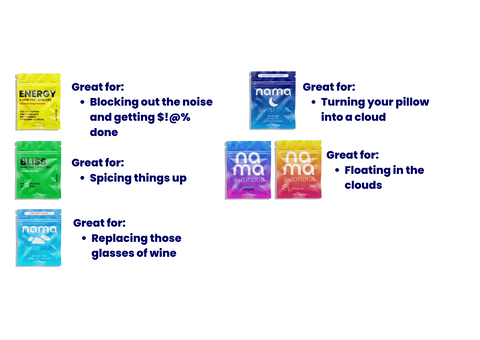



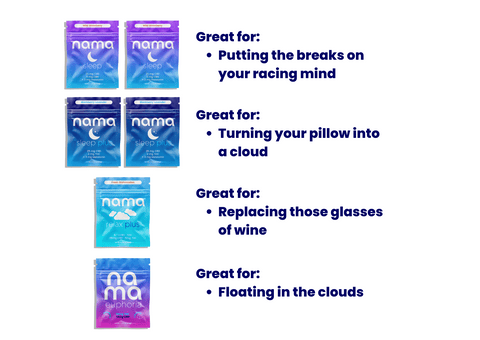





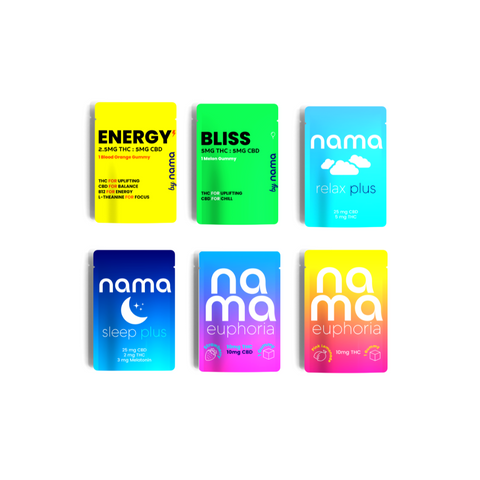




![Buzz Packs™ [THC and CBD Powder Drink Mix]](http://www.namacbd.com/cdn/shop/files/nama_buzz_packs_thc_drink_pack_white_background.png?v=1741884660&width=480)
![Buzz Packs™ [THC and CBD Powder Drink Mix]](http://www.namacbd.com/cdn/shop/files/Buzz_Packs_Label.png?v=1741884660&width=480)
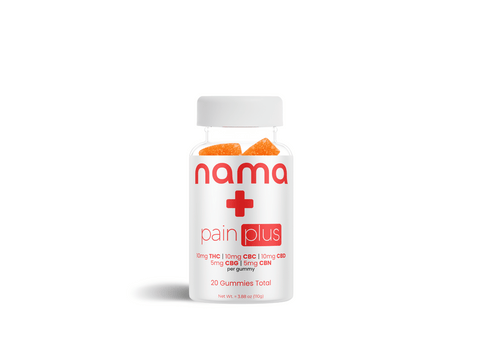

![Buzz Drops™ [THC Drink Drops]](http://www.namacbd.com/cdn/shop/files/nama_thc_buzz_drops.png?v=1711412866&width=480)
![Buzz Drops™ [THC Drink Drops]](http://www.namacbd.com/cdn/shop/files/buzz-drop-wine-comparison.png?v=1736882023&width=480)
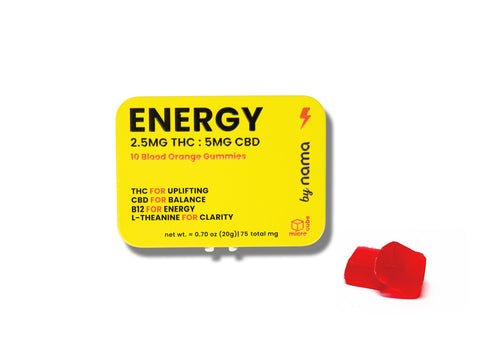





Comments (0)
There are no comments for this article. Be the first one to leave a message!